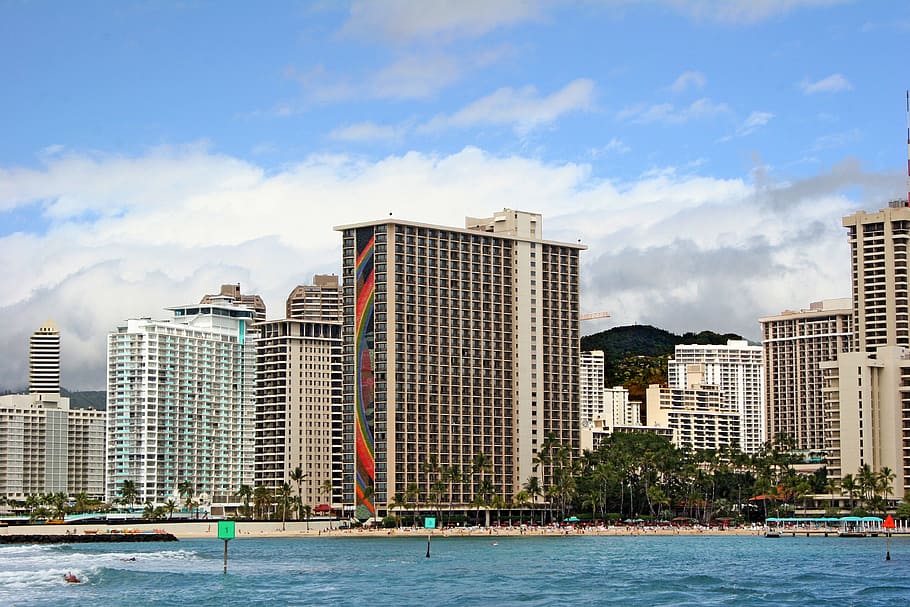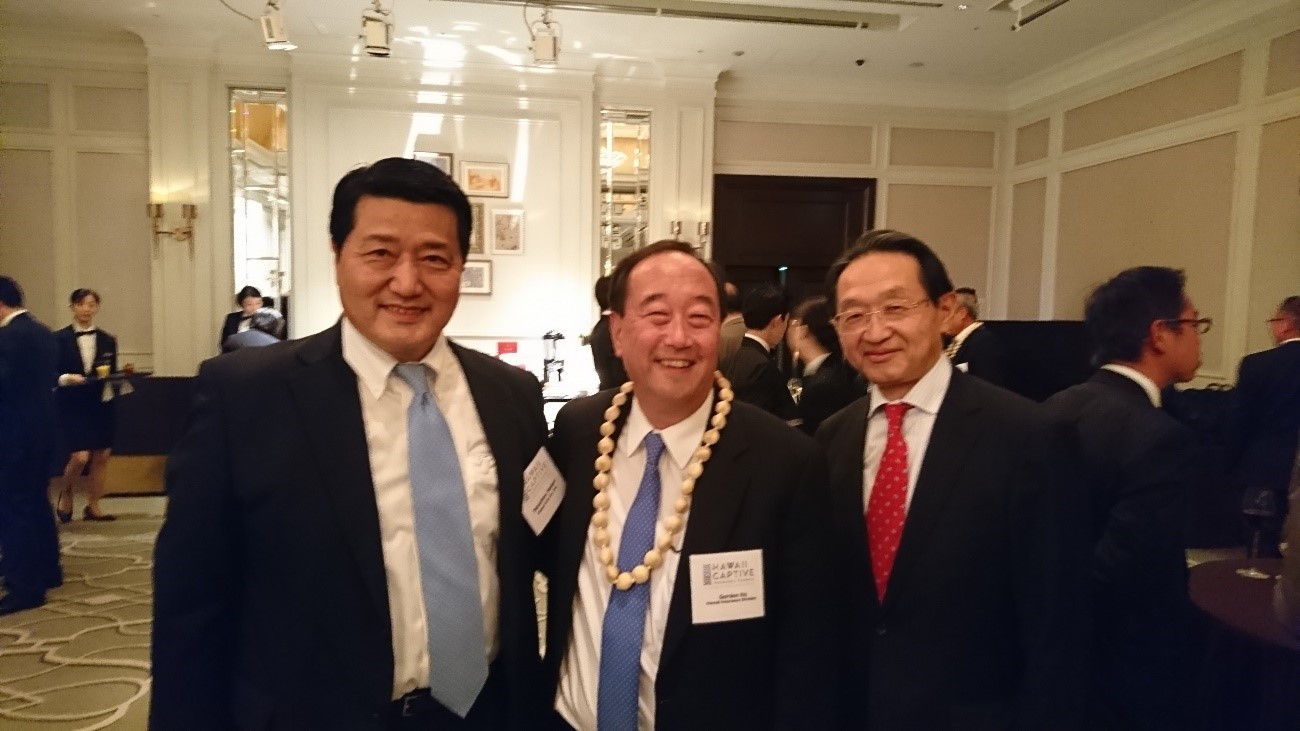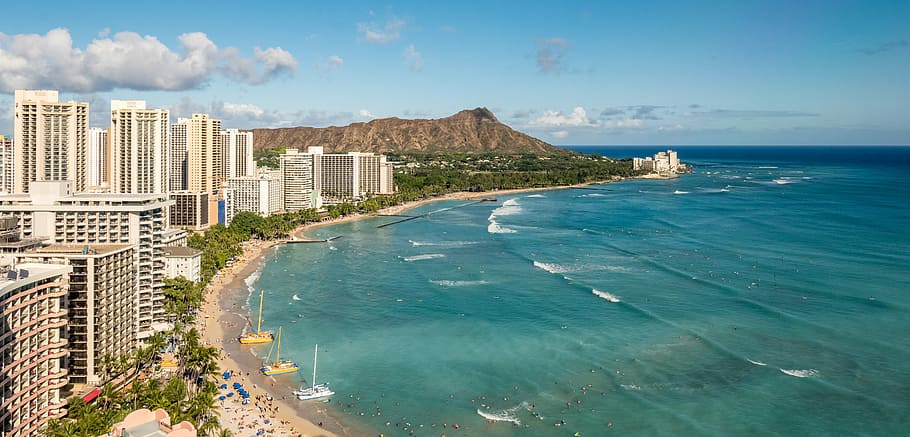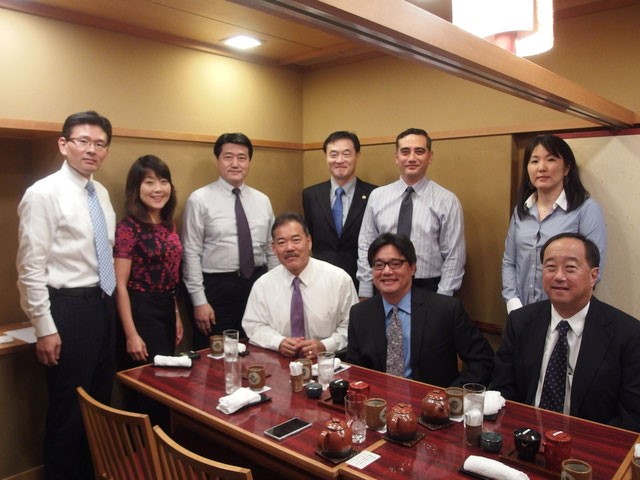設立・運営 2021.11.26
EM8 キャプティブの設立 No.8 (フェーズ2:設立)
目次
- 当コラム内の文章・画像等の無断転載・引用・複製を固く禁じます。
- ① ハワイのキャプティブ保険業界には、知識と経験が豊富で日英バイリンガルの専門家達が各分野で従事している。
- ② ハワイ州保険局とキャプティブオーナーとの間に、協力的で迅速な対応が可能な関係が既に築かれている。
- ③ 円建て資本金や運営資金の保有及び円建ての財務報告が可能であるので、日本の親会社との財務諸表の連結が容易である。
- ④ 海外の再保険及び投資市場を利用することが実現する。
- ⑤ 日本・世界とビジネスを行う上でのハワイの地理的に便利な位置に加え、年間を通して安定した快適な気候であるため、出張時期が限定されない。
- ⑥ ハワイの歴史的な日本との繋がりから日本文化に理解があり、全体的に親日感のある環境の中でビジネスを行うことができる。
- ⑦ 法律及び規制が柔軟である。
- ⑧ キャプティブ業界に特化した、安定的で世界的に評判の良い政府のインフラが存在する。
- ⑨ ハワイは米国のドミサイルのため、日米租税条約のメリットを享受できる。
- ⑩ 内部監査の要件がない。
- 1.「フェーズ2:設立」の全体像
- 2.キャプティブ営業開始までの主なステップ
- 3.現地専門家・専門組織について
- 4.保険会社、保険ブローカー(保険仲立人)について
- 今回のまとめ
- 1. The overall picture of ” Phase 2: Establishment”
- 2. The main steps to start a captive operation
- 3. Local Expertise
- 4. Insurance companies and insurance brokers
- Summary of this issue
当コラム内の文章・画像等の無断転載・引用・複製を固く禁じます。
For those who prefer to read this column in English, the Japanese text is followed by a British English translation, so please scroll down to the bottom of the Japanese text.

ハワイキャプティブ保険協会(HCIC)が「日本企業がキャプティブのドミサイルとしてハワイを選択する理由トップ10」として発表しているものが下記青字(黒字は筆者のコメント)である。
① ハワイのキャプティブ保険業界には、知識と経験が豊富で日英バイリンガルの専門家達が各分野で従事している。
キャプティブの運営、管理はキャプティブ・マネージャー単独ではなく、多くのサービスプロバイダーによって成り立っている。銀行、弁護士、会計士、アクチュアリー(保険数理士)、キャプティブ・マネージャー、そしてグローバル・リンクのようなキャプティブ・コンサルティング会社である。
グローバル・リンクはハワイ州でのキャプティブの設立、運営管理をビジネスモデルとしている会社であるが、「リスクマネジメントの専門企業」の観点から、自社の経営上の不測の事態を避ける「コンティンジェンシープラン」として、「ハワイ州に替わるキャプティブ設立地(ドミサイル)の選定」のため、日本企業への利便性の点から「日本語サービスの提供が可能なサービスプロバイダーが存在するドミサイルを探す」という目的で、米国、ヨーロッパで本格的に二度調査をおこなった。結果は、「ハワイ州以外に日本語でのサービスはできる地域は無い」ということが判明した。
世界的に見ても、ハワイ州ほど充実した現地の「キャプティブサポート体制」の基盤があり、かつ日本語が通じるドミサイルは他に無いのである。ハワイ州が、大手日本企業に注目されている大きな理由の一つである。
② ハワイ州保険局とキャプティブオーナーとの間に、協力的で迅速な対応が可能な関係が既に築かれている。
バミューダ、ケイマン、マン島等のドミサイルの保険監督局を訪問、何度か打ち合わせを持ったが、その後ハワイ州の保険局を訪ねてみて、「え!これほど違うのか」という印象を受けた。「監督機構」という側面も勿論有しているが、保険監督官(コミッショナー:保険局長)以下全職員から、「ビジネスパートナーとして、より良いキャプティブをつくっていこう」という姿勢と意気込みを強く感じたからである。
③ 円建て資本金や運営資金の保有及び円建ての財務報告が可能であるので、日本の親会社との財務諸表の連結が容易である。
ハワイに設立する子会社であるから「海外展開用」にと「ドル建て」で資金管理をするのが一般的であるが、一定の要件を満たせば円建てでの資金管理も可能になる、非常に柔軟なキャプティブの監督体制となっている。
④ 海外の再保険及び投資市場を利用することが実現する。
世界最大の金融市場である米国で投資をおこなっているため、再保険料の送金の安全性等からもキャプティブへの評価が高くなるメリットもある。
⑤ 日本・世界とビジネスを行う上でのハワイの地理的に便利な位置に加え、年間を通して安定した快適な気候であるため、出張時期が限定されない。
日本企業がキャプティブを進めていく点から、ハワイにキャプティブを持つことはビジネス上非常に大きなメリットがある。日本とハワイの「時差」である。
日本時間の朝9時がハワイ時間の午後2時であり、日本時間の午前中はハワイの仕事時間と重なっており、「毎日の連絡がごく簡単にできる利点」がある。また、1年中温暖な気候で特に雨期もなく、また7~8時間の海外フライトとしては短い時間で出張できる利便性は大きい。
⑥ ハワイの歴史的な日本との繋がりから日本文化に理解があり、全体的に親日感のある環境の中でビジネスを行うことができる。
現在の保険監督官(コミッショナー:保険局長)はMr. Colin Hayashida(ハヤシダ)であり、前保険局長はMr. Gordon Itoh(イトウ)である。
Family Nameから推察できるとおり、お二人とも日系3世であり、また銀行にも、法律事務所にも多くの日本人、日系人たちがいるため、ハワイは、海外というより「沖縄の少し先にある場所」という親しみの感覚を持てるところである。
下の写真は、2017年11月14日、東京駅ステーションホテルで開催された「ハワイ州キャプティブ保険協会(HCIC)・ハワイ州保険局」共同開催のセミナーがあり、グローバル・リンクはメイン講演の講師をグローバル・リンクのお客様である静岡新聞社・静岡放送とともに務めた後のレセプション・パーティでの写真である。
Global Link was one of the main speakers at a seminar held jointly by the Hawaii Captive Insurance Council (HCIC) and the Hawaii State Department of Insurance at the Tokyo Station Hotel on November 14, 2017, with Global Link client Shizuoka Shimbun and Shizuoka Broadcasting Corporation. This is a photo of the reception party after the seminar.

筆者 イトウ前ハワイ州保険監督官(コミッショナー:保険局長) 菅原執行役員
Author (GLC), Itoh- former commissioner of Insurance in Hawaii , Executive Officer Sugawara (GLC)
⑦ 法律及び規制が柔軟である。
ハワイ州で設立されるキャプティブは、米国の連邦法ではなく、ハワイ州法に基づいて申請、設立される。
米国の他の州や他のドミサイルには見られない特徴であるが、ハワイ州法は保険局長にかなりの権限と裁量が与えているため、例えば、ハワイ州法に法定最低資本金が設定されているものの、最終的な最低資本金の設定は、キャプティブプログラムごとに特有な条件を考慮して、保険局長は判断して決定するというように、非常に柔軟な対応が取られているドミサイルである。
⑧ キャプティブ業界に特化した、安定的で世界的に評判の良い政府のインフラが存在する。
多くのドミサイルでは、「一般の保険会社を監督する部署がキャプティブの管理監督もしている」が、ハワイ州では、「キャプティブ専門の監督部署が存在、監督している」のである。
このように、「キャプティブ特有のメリットを活かせるような管理監督がなされている」ことは、キャプティブにとっては大きなメリットであり、こういう点からも「ビジネスパートナーとして、より良いキャプティブをつくっていこうという姿勢と意気込み」が醸し出されているのであろう。
⑨ ハワイは米国のドミサイルのため、日米租税条約のメリットを享受できる。
日米租税条約では、日本と米国との商取引に関わる租税ルールが明確に規定されており、キャプティブも日米租税条約に基づいて運営管理されるため安心である。
また、保険会社に対する米国内の会計や税法のメリットも存在しており、保険会社専用の会計基準や税法が古くから導入されているため、「保険会社としてのキャプティブ」もその恩恵に浴することができることは大きなメリットである。
⑩ 内部監査の要件がない。
ハワイ州はキャプティブに対して、保険局が独立監査人(Independent Auditor)として認定した公認会計士による独立監査を求めているが、「上場企業の監査要件として知られている、内部監査の要件を課していない」ことが特筆されるべきメリットである。
冒頭述べたとおり、世界の損害保険業界にいる友人、知人の力を借りて、日本企業のキャプティブにとって「ベストなドミサイルはどこか」ということを「キャプティブ事業の開始」以来おこなってきたが、調査すればするほど、ハワイ州の優越性と効用の高さを認識することになったのが、この10年間であった。
タックス・ヘイブンに所在する日本企業のキャプティブのほとんどは1970年代、80年代に設立されたものであり、当時「今のハワイ州がドミサイル候補」となっていれば、多くのキャプティブはハワイ州に設立されたのではないかと考えている。
そのことを裏打ちするように、このところ設立される超大手日本企業の保険料1000億円を超えるような非常に巨大なキャプティブを含めて、日本を代表するような企業の新規のキャプティブの多くはハワイ州に設立されている。これこそ、キャプティブ・ドミサイル(設立地)としてのハワイ州の優位性を示している証拠の一つではないかと考えている。

1.「フェーズ2:設立」の全体像
「フェーズ2:設立」にあたっては、キャプティブを設立する親会社(「オーナー」)は、「現地の有資格専門者家・専門組織」の中核となる現地のキャプティブ・マネジメント会社(「キャプティブ・マネジャー」)、キャプティブの現地代理人となる法律事務所、キャプティブのメインバンク、これらをまず選定する。
その後、キャプティブ・マネジャーは、キャプティブの運営に必要な保険数理人(アクチュアリー)、独立監査人(監査担当会計事務所)、税務担当会計事務所など、キャプティブ経験が豊富な「現地の有資格専門家・専門組織」をオーナーに推薦して、承認を受け、「現地でのキャプティブの運営体制」を整えていく。
ドミサイルの保険監督当局からキャプティブ保険会社の営業認可を受けるため、当局が求める「キャプティブ」に関する情報を網羅した、ハワイ州の場合約200ページに及ぶ「キャプティブ設立申請書(Application Package)」をキャプティブ・マネジャーが中心となって、上記「有資格専門家・専門組織」と協同して、作成、オーナーは「キャプティブの現地代理人」となった法律事務所と連携してハワイ州のキャプティブ申請手数料$1,000を支払い、当局に申請、提出する。
「キャプティブ設立申請書(Application Package)」の審査を受け、保険監督当局から「COGG(Certificate of General Good:キャプティブの適切性に関わる当局の認証)」を取得したら、キャプティブの法人登記をおこない、キャプティブが開設する「メインバンク」口座に資本金の払込を行ない、キャプティブ営業許可証(ライセンス)発行手数料$300を支払い「営業許可証明書」の交付を受ける。これをもってキャプティブの設立がすべて完了することになる。
キャプティブの設立が完了したら、「元受保険契約(日本の元受保険会社との契約)」および「再々保険契約(キャプティブからの再保険契約)」を締結してキャプティブが保険引受を開始、グローバル・リンクと「フェーズ3:キャプティブの運営」にかかわるコンサルティング契約書並びに「リスクマネジメントに関わるコンサルティング契約書」を締結、現地のキャプティブ・マネージャーとは「キャプティブの運営・管理に関する契約書(Management Agreement)」を締結、「フェーズ3(第3段階:キャプティブの運営)」に進むことになる。
2.キャプティブ営業開始までの主なステップ
ステップ1: キャプティブの設立申請
ドミサイルの保険監督当局に申請する。米国ハワイ州の場合、申請書類には、以下の書類が含まれる。
| 書式名 | 内容 |
| キャプティブ保険会社申請書: | キャプティブのClass、所在地、オーナー、キャプティブの取締役・執行役員、キャプティブ運営に携わる専門組織等 |
| キャプティブのオーナー等に関する追加情報: | 保険契約の状況 |
| フィージビリティ・スタディ: | 損害率が50%、90%の場合の今後5年間のBS/PLシミュレーション |
| キャプティブ事業戦略: | キャプティブ名称、営業開始予定日、決算日、会計帳簿の保管地、取引銀行、元受・再々保険(レトロセッション)保険プログラム等 |
| キャプティブ設立申請者経歴書: | 設立申請のため宣誓供述者としてのオーナー、キャプティブ・マネジャー、保険数理人の経歴 |
| 支払準備金証明申請書: | 支払準備金証明に関わる保険数理人の申請書 |
| 独立会計士申請書: | キャプティブの監査業務を担当する独立会計士の申請書 |
| キャプティブ・マネジャー申請書: | キャプティブ・マネジャーの申請書 |
| アクチュアリー分析報告書: | 保険数理人による保険数理分析の報告書 |
| キャプティブのオーナー会社の財務諸表 | |
| オーナー会社の取締役会によるキャプティブ設立についての決議書の写し | |
| 会社定款、付随定款の写しまたはドラフト |
ステップ2: COGG取得
設立申請が承認されたら、COGG(Certificate of General Good:キャプティブの適切性に関わる当局の認証)が交付される。これは、「キャプティブ設立に向けて、この先のステップに進んでもよい」との当局の認証である。
ステップ3: 法人登記、銀行口座開設
COGGの取得から30日以内に法人登記を行ない、「メインバンク」に銀行口座を開設する。口座開設後、オーナーが資本金を振り込む。
ステップ4: 営業許可証明書の交付、キャプティブ設立の完了
資本金着金後、銀行口座残高証明書を保険局に提出し、「営業許可証明書(Certificate of Authority)」が交付されると、キャプティブの設立が完了する。
ステップ5: キャプティブの営業(保険引受)開始
営業許可証明書写しを元受保険会社に提出する。元受保険会社内では、キャプティブ出再を前提とする保険契約引受に関わる社内申請が行なわれ、保険引受が決定・開始される。
3.現地専門家・専門組織について
①現地キャプティブ・マネジメント会社
現地キャプティブ・マネジメント会社は、保険監督当局から許可を受けてキャプティブの運営・管理において「キャプティブ・マネジャー」として中心的な役割を果たすことになる重要な立場を担う。そのため、米国ハワイ州においては、当局にキャプティブ管理代表者(Hawaii Administrative Rules Designed Representative)として登録される。
キャプティブ・マネジメント会社は、キャプティブの会計、資金移動の手配、決算、保険引受、年次株主総会・取締役会開催、キャプティブ運営に携わるその他の現地サービス・プロバイダー(監査・税務担当会計事務所、保険数理人等)の推薦等に関わる業務を行なう。
キャプティブ保険会社の運営・管理に関わる専門的な業務を担当するため、キャプティブに関わる専門性や豊富な経験を有することはもとより、日本語でわかりやすくきめ細かく日本のオーナーに報告・説明できる日本語サービス体制の有無も重要である。
②現地法律事務所
現地の法律事務所は、キャプティブ設立手続を開始する前に日本のオーナーとの間で法務事項の代理人契約を締結し、キャプティブ設立手続および設立後のキャプティブ経営に関わる現地での法律行為を行なう。
ハワイ州においては、当局に登録代理人(Hawaii Registered Agent)として登録される。キャプティブ設立までの間、オーナーとともにキャプティブ設立発起人(Incorporator)の役割を果たし、設立後は、当局への届出、キャプティブ設立後のキャプティブ内の決議等、現地の法律行為を担当する。
また、年次株主総会・取締役会の運営でも主要な役割を果たす。法律事務所を選定するにあたっては、キャプティブ法制に詳しいことが前提になるが、やはり、日本語サービス体制の有無が重要である。
③保険数理人、監査・税務担当会計事務所、銀行
キャプティブは、保険会社であるため、保険数理士(アクチュアリー)が監査資料として提出が義務付けられている保険数理報告書を作成する。
IBNR(既発生未報告損害)備金の計算をおこない報告するとともに、財務諸表に記載されているIBNR備金が適切な保険数理的手法で計算されたことを証明する。税務担当会計事務所は、確定申告書の作成、税務処理、法人税予測等を行なう。監査担当会計事務所は、監査業務、監査報告書の作成等を行うが、ハワイ州においては当局の任用許可を受ける必要がある。
会計事務所の任用にあたっては、キャプティブ分野の専門性が高いことが重要である。取引銀行の選定では、キャプティブ保険会社を積極的に受入れ、日本語サービス体制が整っていることが重要である。
下の写真は、2014年10月6日、グローバル・リンクが名古屋で「企業のリスクマネジメント及びリスクマネジメント型キャプティブの研修会」を開催した際の写真である。
ハワイ州のキャプティブ法は、1987年Char Hamilton Yoshida & Shimomotoのジェリー吉田弁護士(現Goodsill Anderson Quinn & Stifel)が、法案作成やキャプティブの申請手続手順等の作成をおこなった。そのジェリー吉田弁護士、イトウ ハワイ州保険監督官(保険局長)(当時)、グローバル・リンクの法務顧問、志賀 櫻弁護士が講師を務めた。

後列: 上田執行役員、島津弁護士(CHY&S法律事務所)、筆者、志賀櫻弁護士、シモモト弁護士(CHY&S法律事務所)、シマムラキャプティブ検査官(ハワイ州保険庁)
前列: ヨシダ弁護士(CHY&S法律事務所)、サイトウ ハワイ州保険局副局長(キャプティブ保険監督官)、イトウハワイ州保険監督官(保険局長)
*事務所名、役職名は当時のものである
Back row: executive officer Ueda (GLC), attorney Shimazu (CHY&S Law Office), the author (GLC), attorney Sakura Shiga (GLC), attorney Shimomoto (CHY&S Law Office), and captive inspector Shimamura (Hawaii Department of Insurance).
Front row: Attorney Yoshida (CHY&S Law Offices), Saito (Deputy Commissioner of Hawaii Department of Insurance-Director of Captive Insurance), Itoh Commissioner of Insurance) *Office and title titles are current at the time.
4.保険会社、保険ブローカー(保険仲立人)について
①元受保険会社
キャプティブにとっては、元受保険会社は日本のオーナーとの元受保険契約に基づき再保険を出再する「被再保険者」である。元受保険会社とは、再保険契約の締結、再保険料の収受及び再保険金支払等に関する所定の事務手続を行なう。その全般の折衝は日本のオーナーがおこなうが、キャプティブへ出再する保険に関しては、グローバル・リンクに「保険代理業務」が委任されるためグローバル・リンクが行なうことになる。
②再保険ブローカー、再々保険会社
キャプティブは、再保険ブローカーとの間で、再々保険会社との再々保険契約の締結、再々保険料の支払、再々保険金の収受等の事務手続を行なうが、折衝は日本のオーナーから「リスク・マネージャー」の委任を受けたグローバル・リンクが行なう。
今回のまとめ
キャプティブ設立手続は、ドミサイルで、キャプティブ・マネジメント会社(キャプティブ・マネージャー)、現地法律事務所を中心に、3ヶ月程度をかけて行なうが、特に、キャプティブ・マネジメント会社は、設立時においても、膨大な設立申請書類の作成、保険監督当局への打診等中心的な役割を担うため、キャプティブ設立・運営に関わる高い専門性・経験、当局や現地サービス・プロバイダーとの太いネットワーク、そして、日本企業のビジネスへの深い理解ときめ細かな日本語サービス体制が必須である。
こういう点からグローバル・リンクとしては、この10年間設立、運営してきたキャプティブすべての設立、運営を委任している、「キャプティブの設立、運営に豊富な実績を持つキャプティブ・マネジメント会社(キャプティブ・マネージャー)、アラカイ・グローバル社」を中心に、FiRMS社とも業務提携を交わして万全の体制の構築に努めている。
キャプティブ・マネージャーと同様、ある時は更に重要な存在となるのが「キャプティブの登録法務代理人(Legal Counsel)」となる法律事務所である。
グローバル・リンクが協業しているハワイの島津弁護士は、日本で高校卒業まで過ごし、その後米国ニューヨークの大学に留学、卒業、法科大学院の卒業を経て米国で弁護士になり、ハワイの地で多くのキャプティブの設立、運営に携わり、先ごろ独立して「島津国際法律事務所」を設立した。島津弁護士は、日本企業や日本人の気質に非常に通じており、堪能な英語と日本語でのきめ細かな法務サービスからも、お客様も安心して業務をお願いできる、「余人をもって代えがたい逸材」との評価がある弁護士であり、グローバル・リンクが設立したキャプティブの登録法務代理人はすべて島津弁護士にお願いをしている。
このように、グローバル・リンクは、まさに「グローバル」な「リンク」によってエキスパート組織を構築することによって、キャプティブの設立、その後の「フェーズ3:キャプティブの運営」に於けるお客様のご要望に的確にお応えできる体制を整えている。
執筆・翻訳者:羽谷 信一郎
It is strictly forbidden to publish, copy, quote or distribute the contents of this column without permission.
English Translation
EM (Establishment・Management) 8 – Establishment of the Captive No.8 (Phase 2: Establishment)
The Hawaii Captive Insurance Council (HCIC) has released the following list of the “Top 10 Reasons Why Japanese Companies Choose Hawaii as a Captive Domicile” in blue text (black text is author’s comment).
① Hawaii’s captive insurance industry is staffed by knowledgeable, experienced, bilingual professionals in a variety of fields.
The operation and management of a captive is not the sole responsibility of the captive manager, but rather the responsibility of a number of service providers. There are banks, lawyers, accountants, actuaries, captive managers, and captive consulting firms such as Global Link.
Global Link’s business model is to establish and manage captives in the State of Hawaii, but as a “risk management company” it has also developed a “contingency plan” to avoid its own business contingencies. In order to select a captive location (domicile) to replace Hawaii as a “contingency plan” to avoid business contingencies, we conducted two full-scale surveys in the US and Europe, primarily to find a domicile with a service provider that could provide services in Japanese.
As a result, it was found that “there are no areas where Japanese language service is available” except in Hawaii. No other domicile in the world has such a strong base of local captive support and Japanese language capability as Hawaii. This is one of the main reasons why Hawaii is attracting the attention of major Japanese companies.
② A cooperative and responsive relationship has already been established between the Hawaii Department of Insurance and the captive owners.
I have visited and had several meetings with the Bermuda, Cayman, Isle of Man and other domicile insurance regulators, but when I visited the Hawaii Department of Insurance afterwards, I was struck by how different it was. I was impressed by the attitude and enthusiasm of the Director General of the Department of Insurance and all his staff to create a better captive as a business partner.
③ The ability to hold capital and operating funds in yen and to report financials in yen makes it easier to consolidate financial statements with the parent company in Japan.
As a subsidiary established in Hawaii, it is common to manage funds in dollars for “overseas expansion”, but if certain requirements are met, funds can be managed in yen, making the captive’s supervisory structure very flexible.
④ Access to overseas reinsurance and investment markets will be achieved.
By investing in the US, the world’s largest financial market, captives benefit from the security of remittance of reinsurance premiums.
⑤ In addition to Hawaii’s convenient geographic location for doing business in Japan and around the world, Hawaii’s stable and comfortable climate throughout the year allows us to travel at any time of the year.
The time difference between Japan and Hawaii is very useful in promoting and controlling captive business in Japan.
9:00am Japan time is 2:00pm Hawaii time, which means that the morning hours in Japan coincide with the work hours in Hawaii, which has the advantage of making daily contact very easy. The climate is mild all year round, with no rainy season, and the short 7-8 hour flight time makes it convenient for business trips.
⑥ Hawaii’s historical ties with Japan have led to an understanding of Japanese culture and an overall friendly environment in which to do business.
The current Director General of Insurance (Commissioner of Insurance) is Mr. Colin Hayashida and the former Director General of Insurance (Commissioner of Insurance) is Mr. Gordon Ito.
As can be inferred from from their family names, they are both third generation Japanese Americans, and there are many Japanese and Japanese-Americans in the bank and in the law firm, so Hawaii feels more like “a place just beyond Okinawa” than a foreign country.
⑦ The laws and regulations are flexible.
Captives incorporated in Hawaii are governed by the laws of the State of Hawaii, not the federal laws of the United States.
This is a feature not found in other US states or other domiciles, but Hawaii law gives the Director of Insurance considerable authority and discretion, so that, for example, while Hawaii law sets statutory minimum capital requirements, the final minimum capital requirements are determined by the Director of Insurance, taking into account the unique requirements of each captive program. This is a very flexible domicile, as the decision is made based on judgment.
⑧ There is a stable and globally reputable government infrastructure dedicated to the captive industry.
In many domiciles, the department that oversees general insurance companies also oversees the management of captives, but in Hawaii, the oversight department is a “captive specific oversight department”. This is a great advantage for captives and is worthy of special mention.
⑨ Because Hawaii is a U.S. domicile, it can enjoy the benefits of the U.S.-Japan tax treaty.
The Japan-U.S. tax treaty clearly defines the tax rules for commercial transactions between Japan and the U.S., and the captive can rest assured that it will be operated and managed in accordance with the Japan-U.S. tax treaty.
There are also benefits to insurance companies in terms of accounting and tax laws in the US. Since accounting standards and tax laws specifically for insurance companies have been in place for a long time, it is a significant advantage that the “captive as an insurance company” can also benefit from them.
⑩ There are no internal audit requirements.
A notable benefit is that Hawaii does not impose on captives “the internal audit requirement known as the public company audit requirement”.
As mentioned at the beginning of this article, we have been working with friends and acquaintances in the global P&C insurance industry since the “inception of the captive business” to determine the “best domicile” for Japanese captives. The more I researched, the more I became aware of Hawaii’s superiority and utility.
Most of the captives of Japanese companies located in tax havens were established in the 1970s and 1980s, and I believe that many of them would have been established in Hawaii if the state had been a “potential domicile” at that time.
This is supported by the fact that many of the new captives of leading Japanese companies have been established in Hawaii, including a very large captive of a very large Japanese company with a premium of over 100 billion yen that was recently established. I believe this is a testament to Hawaii’s dominance as a captive domicile.
1. The overall picture of ” Phase 2: Establishment”
“In “Phase 2: Establishment”, the parent company (the “Owner”) of the captive selects a local captive management company (the “Captive Manager”) to form the core of qualified local professionals, a law firm to act as the captive’s local representative and the captive’s main bank.
The Captive Manager will then recommend to the Owners, for approval, “qualified local professional organisations” with extensive captive experience, such as actuaries, auditors and tax accountants, who will be required to run the captive and set up the “local captive management structure”.
In order to obtain approval from the domiciliary insurance regulator to operate a captive insurance company, the captive manager is responsible for completing the 200-page “Application Package” in the case of Hawaii, which contains all the information required by the regulator to establish a captive. The owner pays a $1,000 Hawaii State Captive Application Fee and submits the Application Package to the Hawaii State Department of Corporations, in cooperation with a law firm acting as the “local agent” for the captive.
Upon review of ”the Application Package” and receipt of the Certificate of General Good (COGG) from the insurance regulators, the captive is registered as a corporation and capital is placed in an account with the “Main Bank”. The captive is then registered as a corporation, the capital is paid into the “Main Bank” account, and the $300 captive business license fee is paid and the “Certificate of Business License” is issued. The captive is then fully established.
Once the captive is established, the captive begins underwriting by entering into a primary insurance contract (with the Japanese primary insurer) and a retrocession contract (reinsurance contract from the captive), and enters into an agreement with Global Link for Phase 3: Operation of the Captive and a Risk Management Agreement. Management Agreement” with Global Link, and a “Captive Operations and Management Agreement” with the local captive manager.
2. The main steps to start a captive operation
Step 1: Application to establish a captive
The application must be filed with the domiciliary insurance regulator. For the State of Hawaii, the application includes the following documents;
Application for Captive Insurance Company: Class of captive, location, owners, directors and officers of the captive, and professional organizations involved in the operation of the captive.
Additional information on the captive’s owners: insurance policy status
Feasibility study: BS/PL simulations for the next 5 years with 50% and 90% loss ratios
Captive business strategy: name of captive, expected date of commencement of operations, date of closing, location of books of account, banks involved, primary and retro insurance programmes, etc.
Captive Applicant Biographies: biographies of owners, captive managers and actuaries as affidavits for the application to establish the captive.
Application for Proof of Reserves: Application of the actuary for proof of reserves.
Application for Independent Accountant: Application for an independent accountant to be responsible for the audit of the captive
Application for Captive Manager: Application for a captive manager.
Actuarial Analysis Report: the report of the actuarial analysis by the actuary
Financial statements of the captive’s owner company:
A copy of the resolution of the board of directors of the owner company to establish the captive:
A copy or draft of the company’s articles of association and by-laws:
Step 2: Obtaining a COGG
Once the application to establish a captive has been approved, a Certificate of General Good (COGG) will be issued. This is a certificate from the authorities stating that the company may proceed to the next step in the process of establishing a captive.
Step 3: Registration of company and opening of bank account
Within 30 days of obtaining the COGG, the company is registered and a bank account is opened. After opening the account, the owner will transfer the capital to the main bank account.
Step 4: Issuance of business license certificate and completion of captive establishment
Once the capital has been paid in and the bank account balance has been submitted to the Insurance Department and the Certificate of Authority has been issued, the establishment of the captive is complete.
Step 5: Commencement of business (underwriting)
A copy of the Certificate of Authority is submitted to the primary insurer. An internal application is then made to the primary insurer for the underwriting of the captive’s policies, and the underwriting process begins.
3. Local Expertise
① Local Captive Management Company
The local captive management company is authorized by the insurance regulator to play a central role in the operation and management of the captive as the “captive manager”. In the State of Hawaii, the local captive management company is registered with the regulator as a Captive Management Representative (Hawaii Administrative Rules designed Representative).
The captive management company is responsible for accounting for the captive, arranging for the transfer of funds, closing accounts, underwriting, holding annual meetings of shareholders and the board of directors, and recommending other local service providers (e.g., audit and tax accounting firms, actuaries, etc.) for the operation of the captive.
As they are responsible for the professional operation and management of the captive insurance company, it is important that they have expertise and experience in the captive business, as well as the ability to report and explain in Japanese to the Japanese owners in an easy-to-understand and detailed manner.
② Local Law Firms
A local law firm is required to enter into a legal representation agreement with the Japanese owner prior to the commencement of the captive formation process, and to act as the local legal representative for the captive formation process and post-formation captive management.
In the State of Hawaii, they are registered as a Hawaii Registered Agent. Together with the owners, they serve as the incorporators of the captive and are responsible for the local legal affairs of the captive, including the filing of filings with the authorities and the management of the captive.
They also play a key role in the organisation of annual general meetings and board meetings. In selecting a law firm, familiarity with captive legislation is a prerequisite, but the availability of a Japanese language service system is also important.
③ Actuaries, audit and tax accounting firms and banks
As a captive is an insurance company, an actuary prepares the actuarial report which is required to be submitted as audit material.
They calculate and report on the IBNR reserve and certify that the IBNR reserve shown in the financial statements has been calculated using appropriate actuarial methods. The tax accountant’s office prepares the tax returns, processes the taxes and forecasts the corporate income tax. Audit firms provide audit services and prepare audit reports, and in the State of Hawaii must be approved for appointment by the Department.
When appointing an accounting firm, it is important that the firm have a high level of expertise in the captive area. When selecting a bank, it is important that the bank is willing to accept captive insurance companies and has a Japanese language service system in place.
4. Insurance companies and insurance brokers
① Primary insurers
For captives, the primary insurer is the ” reinsured ” who cedes reinsurance under the primary insurance contract with the Japanese owner. The Japanese owners will handle all negotiations. Global Link is the “insurance agent” for the reinsurance ceded to the captive.
② Reinsurance brokers and reinsurers
The captive will enter into a reinsurance agreement with the reinsurance broker, pay reinsurance premiums and collect reinsurance proceeds, and Global Link will act as the “risk manager” for the Japanese owner.
Summary of this issue
The process of setting up a captive takes about three months at Domicile, with the captive management company (captive manager) and a local law firm playing a central role in preparing the large number of application documents and making representations to the insurance regulator. In particular, a captive management company needs to have a high level of expertise and experience in setting up and managing captives, a strong network of contacts with the regulators and local service providers, and a deep understanding of the Japanese business environment.
In view of this, Global Link has entrusted the establishment and operation of all captives it has managed over the past 10 years to Alakai Global, a captive management company with a wealth of experience in captive establishment and operation, and has also entered into a business alliance with FiRMS to ensure that all captives are well managed.
Just as important as the captive manager, and at times even more important than the captive manager, is the law firm that acts as the “registered agent of the captive”. Ms. Shimazu lived in Japan until his graduation from high school, then went to college in New York, graduated from law school, and became a lawyer. Ms. Shimazu’s fluency in English and her knowledge of Japanese companies and people make her a perfect fit for the role of a captive representative. All of Global Link’s captives are represented by Ms. Shimazu.
By creating a truly “global” “link” of experts, Global Link is well placed to respond to the needs of our clients during the establishment of a captive and the subsequent “Phase 3: Operation of the Captive”.
Author/translator: Shinichiro Hatani

